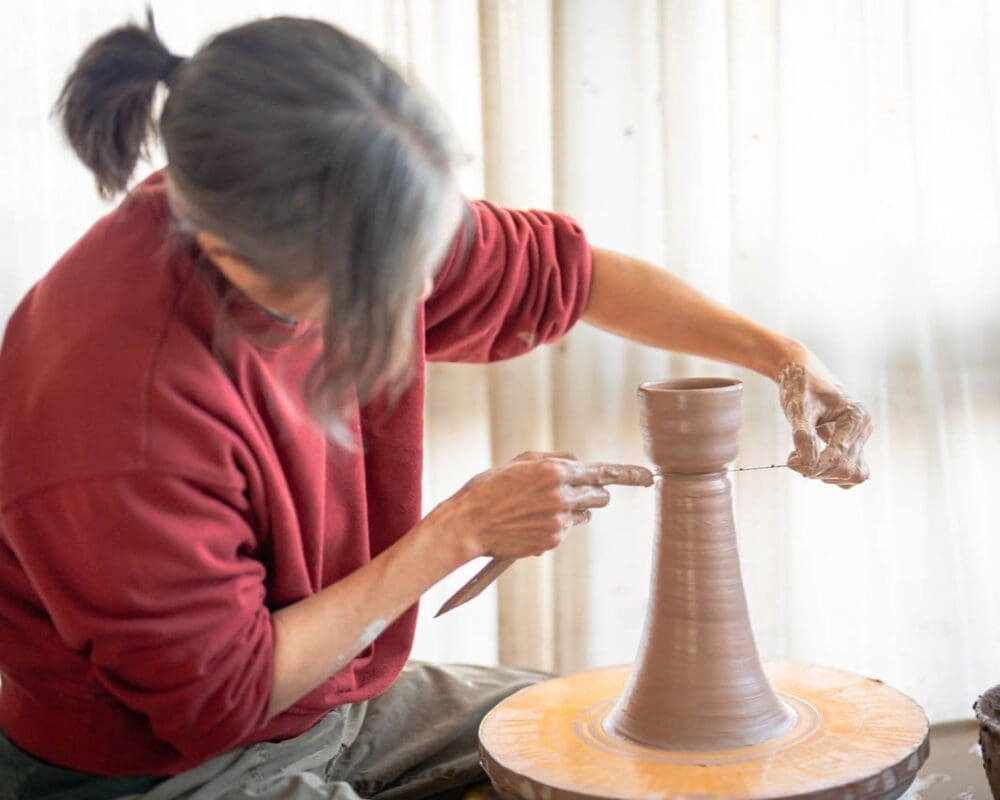You eat with your eyes first.
It is well known in the restaurant world that the first sight of food is extremely crucial. When eating at chef-driven restaurants, the plating is often as important as the taste itself. It might seem ridiculous to think, but as diners and humans, we truly do eat with our eyes first. When a dish is visually appealing, it sets the rest of its parts up for success. The sense of taste and smell are inherently distinct, but it has been proven that visual stimuli in food can alter the perception of taste, smell and flavor. This is to say that, yes, the way a dish is plated does matter.
So, chefs will pull out every trick in the book to wow a guest by sight alone. Edible flowers, mossy microgreens, silky purees splattered with a spoon—the list goes on and the techniques are constantly evolving. However, something that doesn’t get enough attention, at least on the guest side of the experience, is the plate itself—the canvas for the food. The world’s best chefs understand this and will turn to expert potters for custom-made plates, bowls and tableware. Whether it be at a Three-Star in Copenhagen or a pasta bar in New Jersey, the plate matters. In NJ and NYC, the best chefs turn to Keiko Pots for expertly crafted tableware and more.
Keiko Pots
Keiko Inouye didn’t always strive for a life in pottery. However, when Inouye attended college, her science major began to take a backseat to her growing passion for pottery. “I sort of stumbled into it, to be honest,” she tells me. Eventually, Inouye made pottery her minor, and then her full-time focus. In order to maximize her knowledge of the artistry, Inouye traveled to Japan, as many aspiring potters do, to apprentice under a master of the craft.
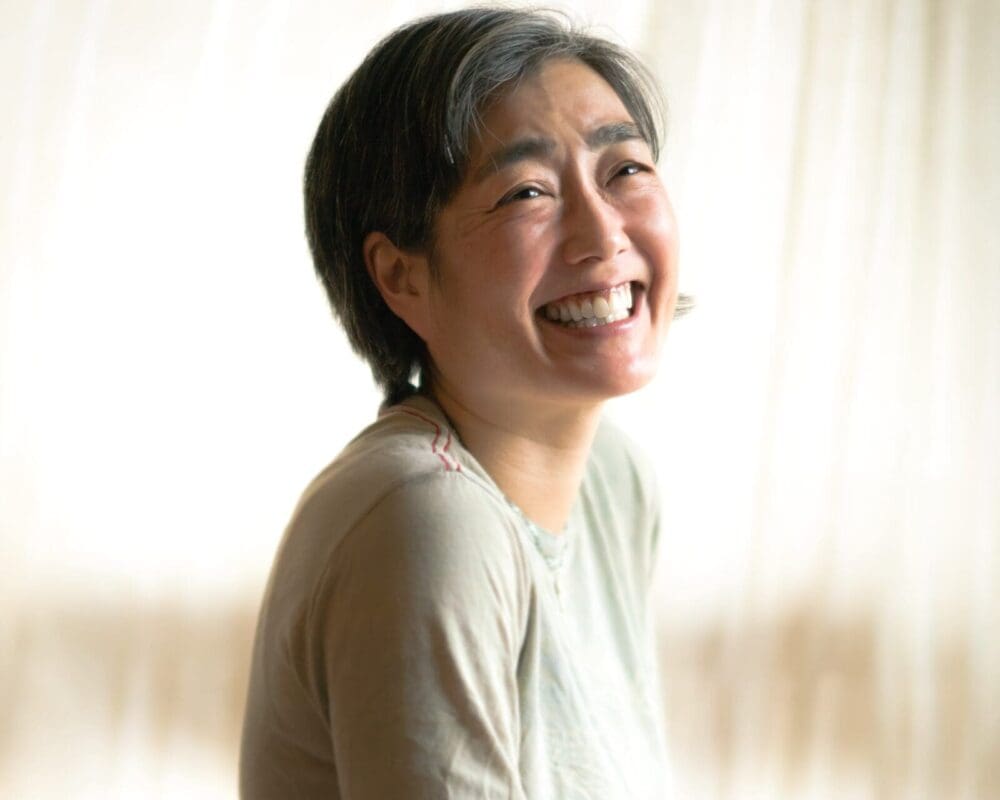
Keiko Inouye | photo by Herbert Galang
From 1996 to 2000, Inouye went through a lengthy, four-year apprenticeship under Kaitaro Kojima—a well-established craftsman coming from a lineage of respected potters. During that time, Inouye solely assisted Kojima with his own work. These apprenticeships are set up in a way where the student works and learns, leaving the creativity to the master. This is to say that Inouye spent these years learning the ins and outs of Kojima’s work without ever crafting her own. But, this wasn’t an issue for Inouye; instead, it was the best school there was.
There’s no set timetable for an apprenticeship of this style. You either make it through, or you don’t, and the former only comes when you’re truly ready to move on. “At the end he sort of just said ‘ok, you’re graduating,’ and then he gave me my signature,” Inouye said. The gifted signature is a tradition in Japanese potting where the master creates their students’ signature for them when they graduate. “He [Kojima] used the signature his teacher gave him and I still use the one that he gave me,” she says, explaining the long-standing tradition. And, sure enough, if you look at any of Keiko Inouye’s pots, you’ll see her signature—which pulls from her last name and the kanji for water well.

Wagyu beef tartare by Chef AJ Capella on a Keiko Pots floating plate | photo via AJ Capella
From there, she returned to the U.S. and practiced her craft throughout the years, but it wasn’t until 2011 when she started working at The Pluckemin Inn in Bedminster, NJ as a food runner that her ceramics began to take shape into a career. It was there that she met Chef AJ Capella (Executive Chef of Summit House today). Capella asked to see her work and began spreading the word.
Eventually, her work landed in front of Chef Craig Polignano (Now at Juniper Hill) of the legendary Ryland Inn in Whitehouse Station, NJ. “I brought some of my work to show him [Polignano] and he immediately bought all of it,” says Inouye.
Since then, that has more or less been the Keiko Pots model: chef-driven plates. “I want to see the plate through their eyes and how they want to plate. That informs how I make plates for chefs,” she tells me. And this business model is something chefs can’t get enough of. Over the years, word of mouth has spread Keiko Pots name to more chefs than just Capella and Polignano.
Chef Robbie Felice has worked closely with Keiko Pots for his exclusive pastaRAMEN pop ups. The tasting-menu style of dinner demands a plate that is as grandiose as the food itself. “I would tell her a dish and how I wanted the plate to be and she would make it exactly as I envisioned it,” says Felice.
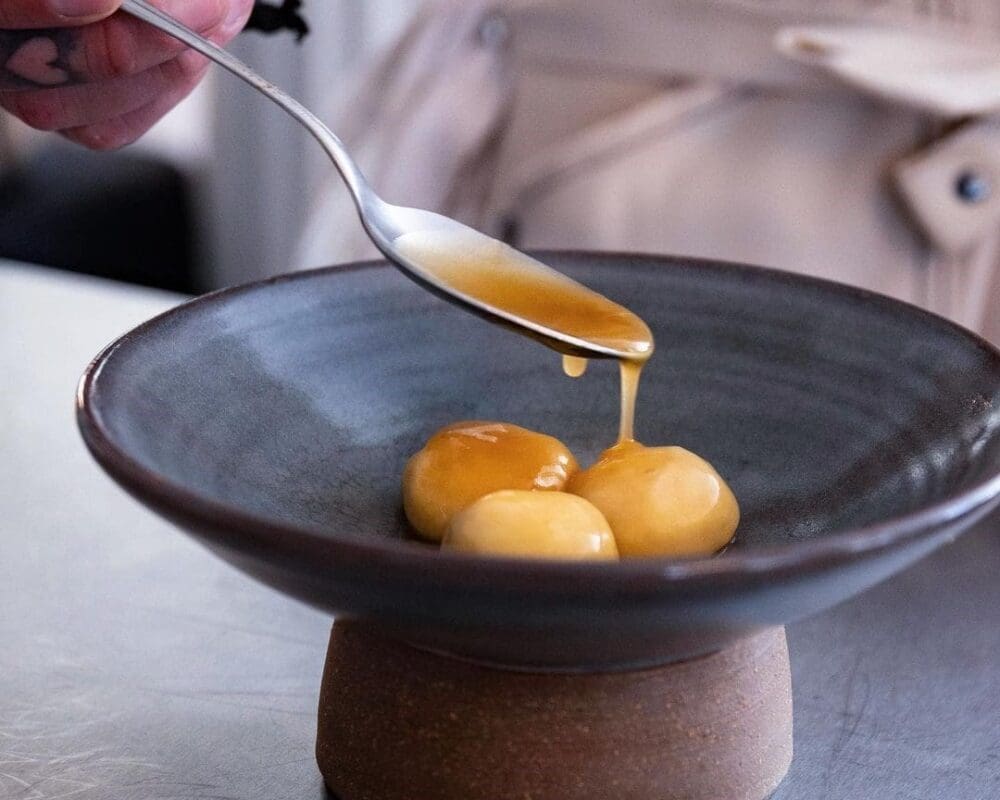
Ricotta and Parmigiano gnudi by Chef Robbie Felice plated in a Keiko raised bowl | Photo by Pete Bonacci
For Ehren Ryan of Common Lot, it was a similar story. Keiko Inouye walked into the intimate Millburn restaurant with an array of samples. Ryan picked from the bunch the ones he liked and discussed other plating needs for his food. From there, Inouye crafted a set specially for Common Lot’s innovative menus. That’s been the model that works and chefs have even contacted her directly with ideas for plates that they have and need executed. Then, she delivers.
Chefs Nick DeRosa, Sean Yan, Brett Smith, Mike Carrino, Hari Nayak and many more have employed Keiko Inouye for their tableware needs throughout the last decade. If you consider yourself a NJ/NYC restaurant lover, you have probably eaten off of her work before without even knowing it. So, what is it about Keiko Pots that sets it apart from the rest?
Of course, the custom option is something that is incredibly attractive to a chef. Being able to envision a plate and have Inouye craft it is a priceless service and a far cry from the stack of 100 identical porcelain plates from the restaurant supplier. Like a chef’s food—which is meant to be totally unique and unable to be replicated elsewhere—the plate should follow the same formula. Why serve food on tableware that is in a thousand other restaurants when you can serve it on something specifically made for you?
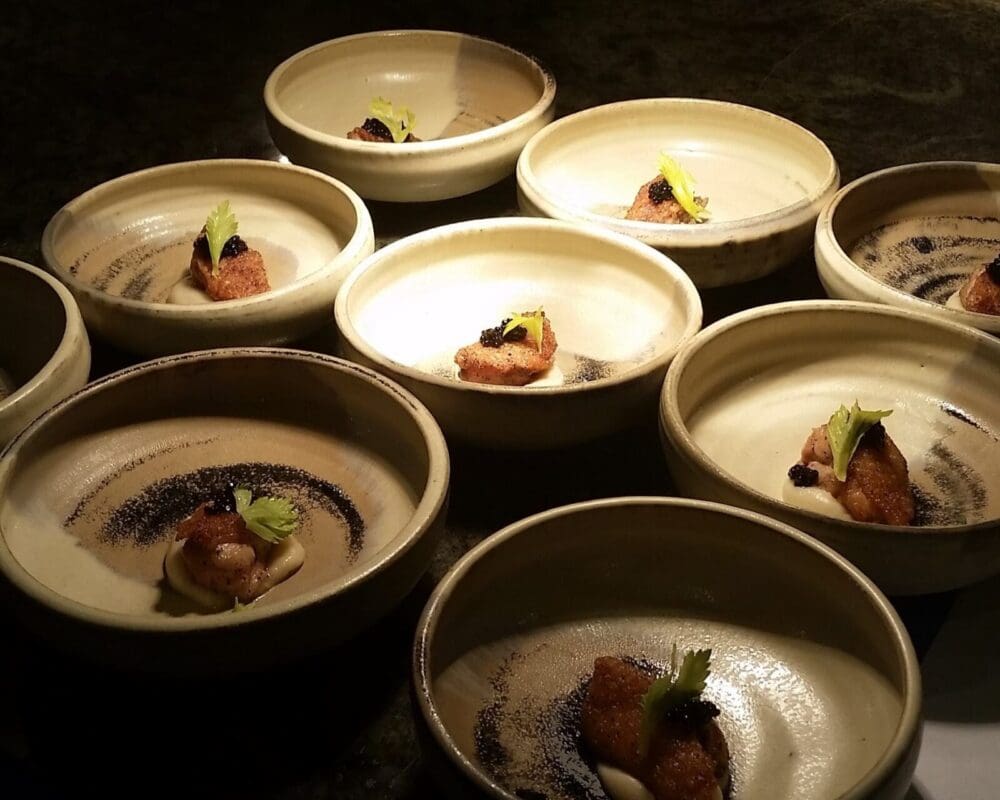
AJ Capella’s crispy chicken oyster, plated on a Keiko Inouye piece | photo via AJ Capella
Beyond the custom touch is the materials—the base for Keiko’s pots. Inouye explained to me that there are three main types of clay to use for ceramics: stoneware, earthenware and porcelain. For her work at Keiko Pots, she solely utilizes stoneware. “Stoneware is extremely durable, and the look is great,” she tells me. Beyond visuals, stoneware is strong and because it is less porous (than earthenware), it makes for the ideal eating material if you are after that natural, stone look.
Once a material is picked, a fire method is chosen. Depending on the piece, Inouye will choose between electric fire, wood fire and gas fire to finish. They all serve different purposes and may be picked for a variety of reasons. For example, electric fire is consistent—it’s reliable and can be counted on for large projects that require the making of multiple plates that are identical in look.
With gas fire kilns, there’s a unique advantage: the ability to change the color of the material. Using a process known as gas reduction, Inouye deprives the kiln of oxygen in favor of carbon monoxide. This method will change a glaze’s color; for example, converting a copper glaze from green in oxidation to red in reduction. Oxygen reduction is something that is usually only seen in gas-fire kilns (though not as common, it is possible to create some reduction in an electric kiln).
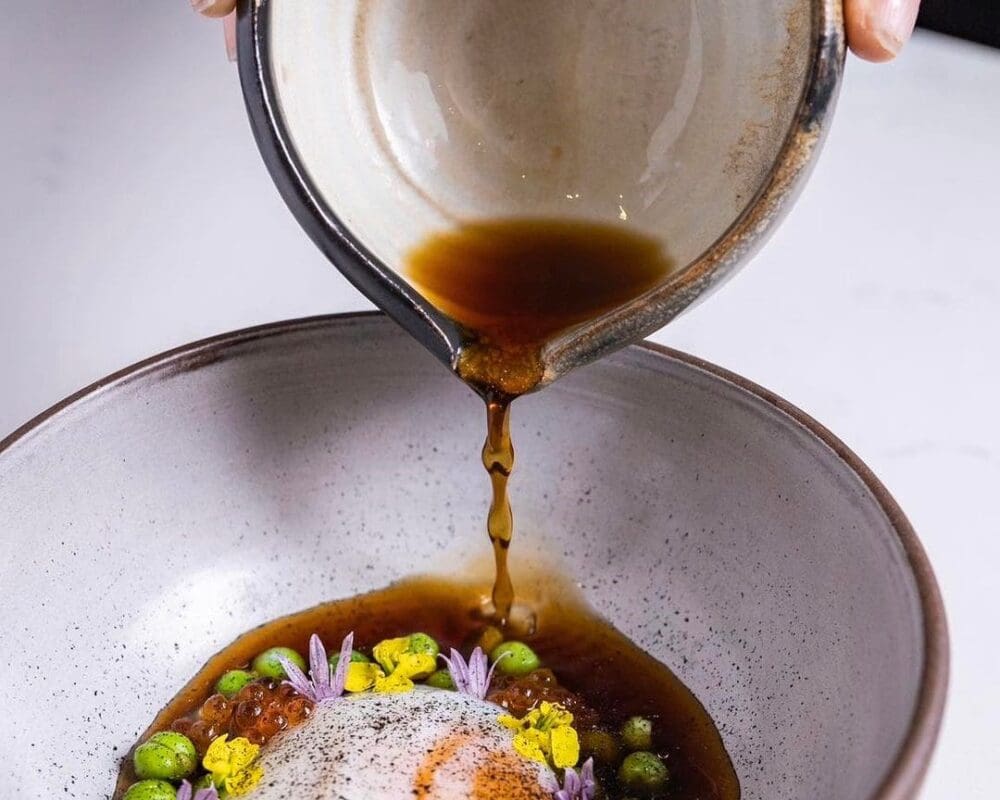
Chef Ehren Ryan of Common Lot pours broth from a Keiko Pots pitcher | photo by Pete Bonacci
Lastly, the oldest method of them all: wood fire. This traditional method has been used in East Asian pottery for thousands of years. Twice a year, Inouye fires at the Anagama wood-fire kiln at John Reinking’s studio in Pittstown, NJ. It’s a six-day firing process involving a community of potters and the kiln’s intensity and unpredictability makes for truly exclusive pots. Inouye even gave me the inside scoop on a wood-fire dinner that they are putting together with AJ Capella, where the plates all come from Reinking’s woodfire kiln. This special event will take place during the most spectacular stage of the firing with temperatures hovering around 2200F and flames shooting out of the chimney. Diners will have the opportunity to enjoy a beautifully cooked meal while watching the crew stoke and monitor the kiln. A full circle dinner in every sense of the phrase.
From Vision To Table
To date, Keiko Pots has been something of a passion piece for Inouye. Her day job as a lab tech still demands much of her attention, but that will soon change. In the Spring, Inouye will retire from her career in the lab and shift her full-time focus to pottery. In other words, the best has yet to come.
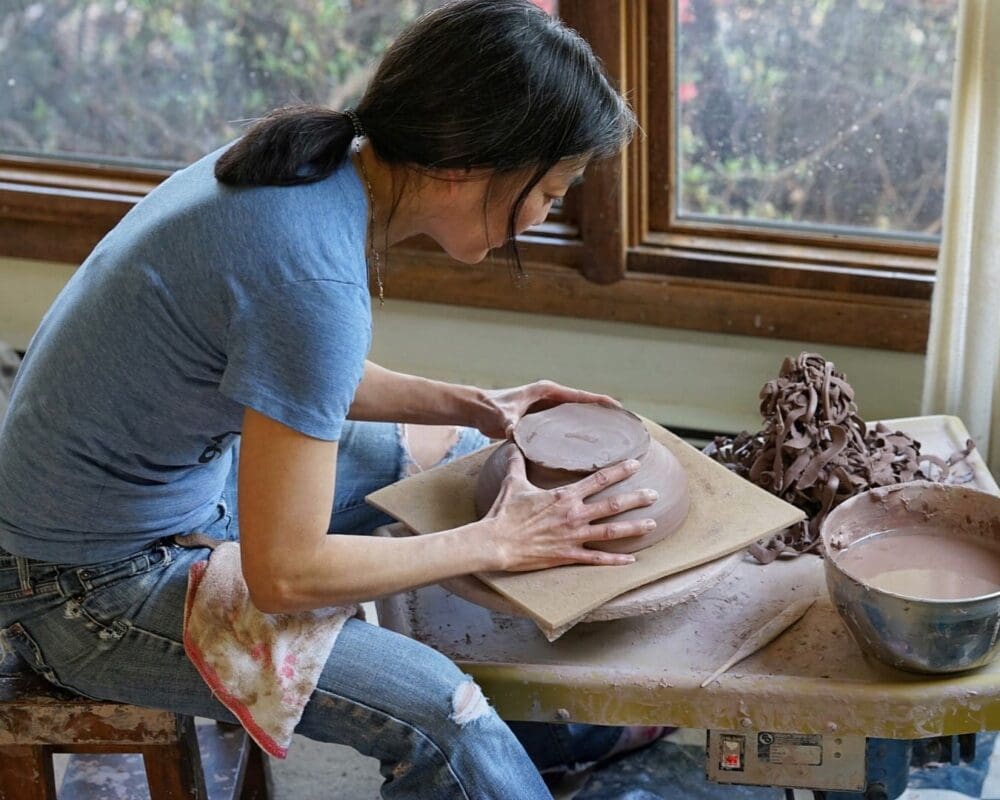
Keiko Inouye at the potter’s wheel | photo by Herbert Galang
Keiko Inouye makes more than just plates and pots. You can expect to see bowls, vases, cups and other tableware. If you’re interested in purchasing her work, you can find it for sale currently at Papillon & Company in Metuchen, NJ. You can also make a custom request at the contact form on the Keiko Pots site. Inouye also loves crafting sculptures and other pieces of visual art. Her favorite of all, though? Making a chef’s idea for a piece come to life.
“I love taking chefs’ visions and making something with them. It’s really exciting. When you have an excited chef, it’s fun, it’s a collaboration. To finally see food on it is the cherry on top,” says Inouye.
About the Author/s
Peter Candia is the Food + Drink Editor at New Jersey Digest. A graduate of The Culinary Institute of America, Peter found a passion for writing midway through school and never looked back. He is a former line cook, server and bartender at top-rated restaurants in the tri-state area. In addition to food, Peter enjoys politics, music, sports and anything New Jersey.
